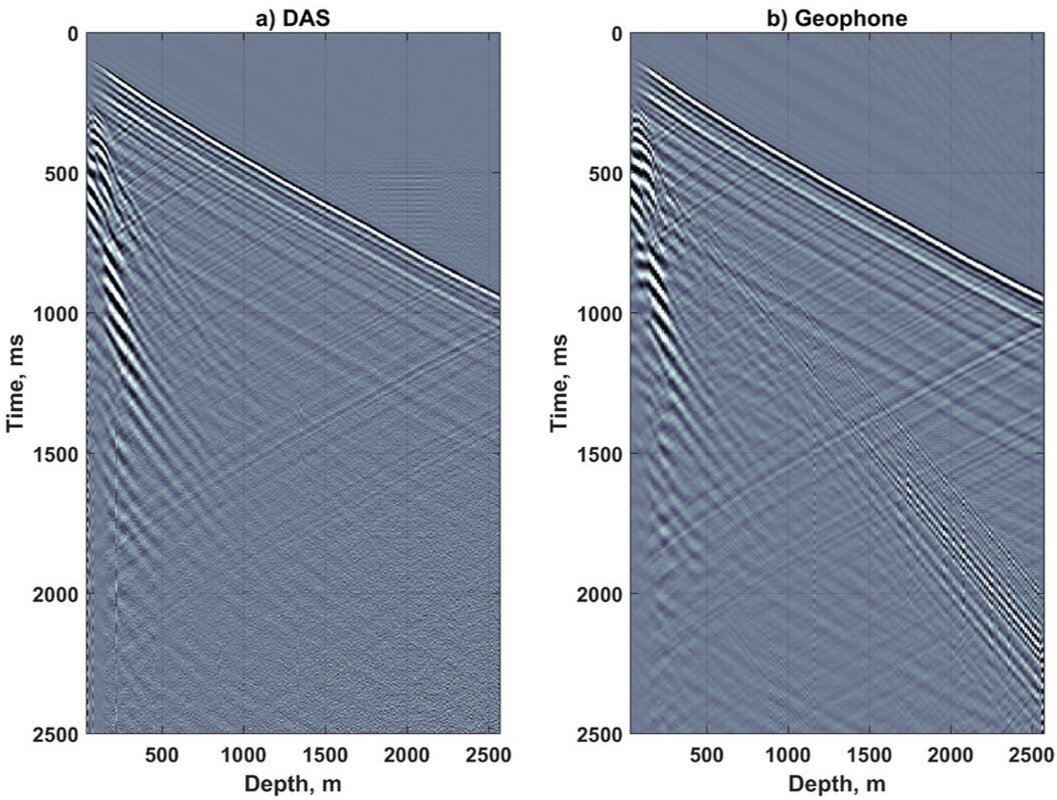
DAS (Distributed Acoustic Sensing)

DAS, using Fiber Optic cables has been utilized in borehole geophysics for the last ten years. The appeal of such technology in this domain is that the entire cable is effectively a sensor with short channel spacing thus facilitating reduced acquisition time for borehole seismic projects. The fiber senses changes in strain along its length and is therefore akin to a single comment geophone oriented along the cable, fiber response is reduced as the angle of incidence increases and is minimal at normal incidence. This directional sensitivity is important to understand when planning DAS borehole seismic surveys. The fiber cable can be deployed in various ways (below).
Fiber cemented behind casing
Fiber on production tubing
Fiber in casing or production tubing (slickline)
If permanent fiber is not available an alternative is a modified wireline cable that incorporates single-mode optical fibers. The advantage of this cable is that it can be used with other logging tools attached, enabling the VSP to be acquired simultaneously with other logging runs.
Dean et al. “
The use of fiber-optic sensing to efficiently acquire vertical seismic profiles” CSEG Recorder Jun 2016.
DAS can be utilized for most types of borehole seismic survey. The only limitation is that imposed by the directional sensitivity thus posing challenges for locating microseismic events from a single fiber (unless the same event can be sensed in the vertical and horizontal section of the same fiber).
Willis et al. “
Comparing DAS and Geophone Zero-Offset VSP Data Sets Side-By-Side
” CSEG Recorder Jun 2016.





